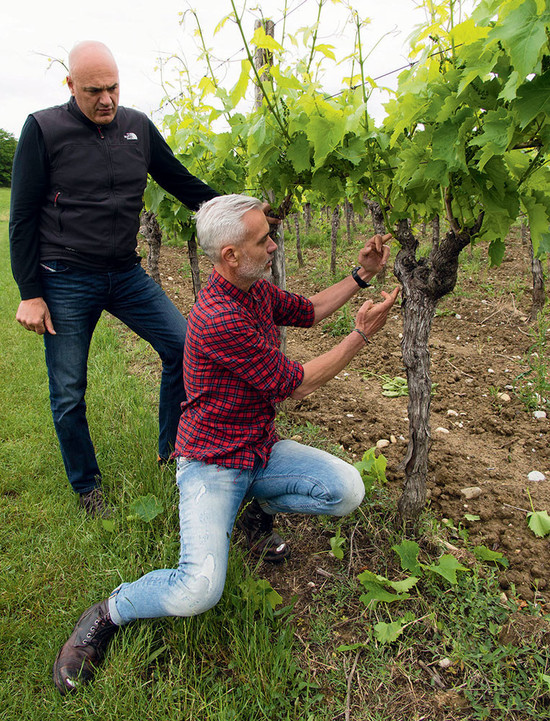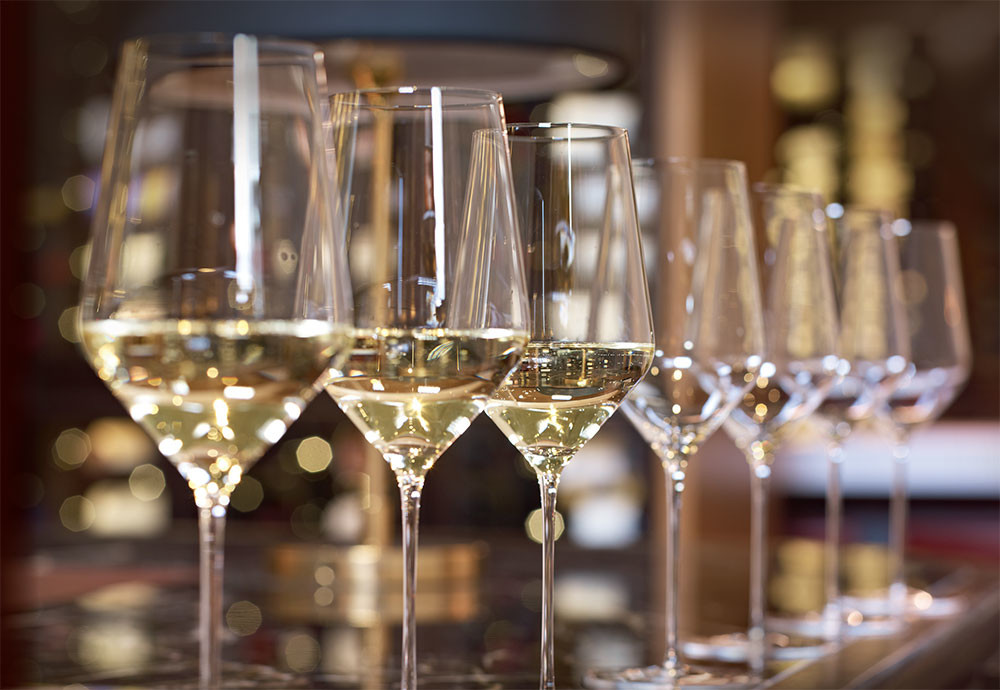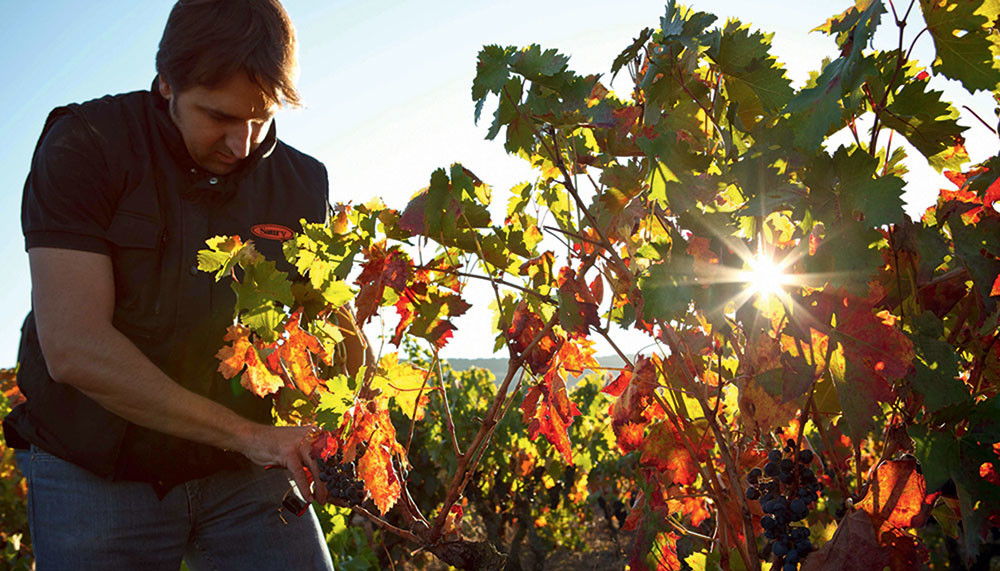Two Italian agronomists have transformed the way many of the world’s top wineries prune their vines. Their pioneering approach has been adopted by estates as prestigious and diverse as Champagne Louis Roederer, Angelo Gaja and a series of top Bordeaux châteaux. Carla Capalbo reaches for the secateurs

We’re so used to seeing vines in vineyards standing rigidly to attention that it’s easy to forget the vine (Vitis vinifera) is not a tree but a rapacious climbing plant whose tendency is to cling to any support it can find. As with clematis, fine tendrils keep the vine off the ground, protecting it from wind damage. Where a vine grows undisturbed, it climbs up trees, its leaves and berries reaching for the light.
‘The vine naturally reproduces through its seeds, so it makes fruits at the extremities of its shoots where they can ripen and be found by birds,’ says Marco Simonit, an agronomist and pruning expert. ‘Humans long ago began domesticating the vine by cutting it back to limit its vigour and make its fruit more accessible.’ The fast-growing grapevine needs at least one annual pruning in winter to contain and shape it, then a green harvest (removal of excess grape bunches) in the growing season.
‘Traditionally, each winemaking area pruned its vines in a local style, whether onto wires, pergolas, or as free-standing bush vines,’ says Pierpaolo Sirch, a fellow agronomist and co-founder with Simonit of consultancy Simonit & Sirch. ‘These techniques were part of that particular area’s savoir-faire. Recently, much of that culture and experience has been lost, due to mechanisation and other changes in rural life.’ Pruning became seen as a menial job and was often given to untrained workers.
‘The toll has become increasingly apparent in recent years,’ says Sirch. ‘The life expectancy of well-managed bush vines was 50 to 100 years; now, in high-density vineyards trained to Guyot or other intensive trellis systems, it can be 20 years. That’s a huge loss of value, and bad pruning is one of the main causes.’ Vines are now often pruned with a one-cutfits- all approach that doesn’t suit the world’s diverse training systems. Many vines are pruned in the wrong places using poor tools, or mechanical cutters that rip the plants rather than making clean cuts. Vines are also now being planted much closer together, and this too contributes to the problems.
Simonit agrees. ‘We’re seeing a huge increase in grapevine trunk diseases weakening and killing vines, often due to cuts that leave the plants less resistant to viruses,’ he says. ‘There have been recent advances in viticulture, yet few people have focused on pruning.’
Tapping the energy
The two friends, who were schoolmates in Friuli, began studying systems and effects of pruning in the 1980s, setting up their company in 1999. Describing themselves as ‘Preparatori d’Uva’ – grape preparers – Simonit and Sirch teach vineyard workers how to prune and manage their vineyards. They give free lessons throughout Italy and beyond, also consulting for wineries who want longer-term help.
Simonit recently published a manual in Italian on pruning for the Guyot vine-training system. If bad pruning can hurt a vine, what is good pruning? ‘Pruning is the first action we take towards the future vintage,’ says Alain Vauthier of Château Ausone. ‘It’s both a short-term decision about the coming season’s growth and a long-term decision about the plant’s architecture.’
To demonstrate their philosophy, Sirch and Simonit take me to a Friuli vineyard they’ve tended for years. Simonit stands like a scarecrow, arms outstretched. ‘The vine’s sap runs up from the roots and along the underside of its branches to the tips of the shoots,’ he says, tracing a line up his leg and under his arms to his fingers. ‘If that energy flow is interfered with or shut off, the plant will be weakened.’
Badly maintained vines are often gnarled and knotted, with that vital sap-line interrupted and blocked. ‘To avoid problems, cutting should ideally be done only from the upper side, leaving this “vein” free,’ Sirch says, pointing to a flourishing vine with small, well-healed cuts along its top side.
‘Only first- or second-year growth should be pruned,’ he continues, ‘as the plant can’t easily heal larger “wounds” on hardened older wood. That’s when it’s most vulnerable to virus attack.’ Simonit nods. ‘Big cuts are like limb amputations and can have a drastic effect. We look at each vine as a whole, and direct its growth for future years by giving it room to expand with as much energy – rather than vigour – as possible.’

A few years ago, Simonit and Sirch came across the work of two French viticulture experts from the Cognac area who had come to similar conclusions about the importance of the vine’s lymph (sap). In the late 1800s, Eugène Poussard had also proposed working directly on the plants to combat disease.
Poussard’s ideas were used by René Lafon in 1921 to develop a practical methodology, though this was not adapted to the many growing styles that are currently in use.
‘Their theories about how to combat disease stopped being applied after the 1920s, when arsenic began to be used in pesticides,’ says Sirch. ‘Its side-effect was to stop the spread of the 15 or more fungal diseases that are commonly known as Esca.’
French connection
Problems with Esca have increased sharply since arsenic was finally banned, about 10 years ago. And there’s more to this French connection. The pair’s influence has spread beyond Italy. Denis Dubourdieu, professor of oenology at the University of Bordeaux – and Decanter’s 2016 Man of the Year – heard them speak in Bolzano, and invited them to carry out a pilot study at his Château Reynon. In 2012 the three became partners in Les Maîtres Tailleurs, the French equivalent of the Preparatori d’Uva. They work with top Bordeaux châteaux including Latour, Pichon Lalande, Haut-Bailly, Ausone, Domaine de Chevalier and Yquem, and with leading estates in other French regions.
‘Applying these methods to the valuable, aged vines of top châteaux is a perfect fit,’ says Dubourdieu. ‘They have the money and interest to keep their vineyards productive and healthy. When their vines suffer attacks of Esca, Simonit’s response – to operate rather than dig up and replant – is showing high success rates.’
Jean-Baptiste Lécaillon, vice-president of Champagne Louis Roederer, is another convert. ‘After four years of collaboration with Simonit and Sirch, the change in our vineyards is soft but clear. We’re planting in a different way; we prune thinking of the sap’s flow; we orientate the buds for the following year to maintain its maximum energy; we debud more precisely to avoid unnecessary wounds... A sum of small but important details.
Bringing in non-Champagne specialists has brought new ideas and questioned – even disrupted – our know-how. How funny to have Italians challenging the Champenois!’
The art of preserving treasured old vines attacked by Esca fungi
With grapevine trunk diseases increasingly taking their toll on the world’s vineyards – estimates suggest at least 10% are affected – Marco Simonit and Pierpaolo Sirch have refined an ancient method, described by Pliny, of surgically operating on infected vines to prevent them from dying.

The trunk’s wood may become spongy or soft when attacked by Esca fungi, but not the roots or rootstock. Mini-chainsaws are used to cut away the spoiled areas in the same way that a dentist drills a cavity (1).

Operators remove the infected parts without touching the sap channels.
Usually, the exposed wood heals in the sun and air and the plant regenerates and bears fruit.
Unlike the grapes of newly planted vines, which are too immature to be added to a ‘first’ wine, these grapes reflect the age of the plant’s roots.
This operation allows estates to recover the productivity of old vines, where age and maturity contribute to their wines’ success.
Photographs: Carla Capalbo
Carla Capalbo is a food, wine and travel writer, and photographer, based in Italy
Translated by ICY
All rights reserved by Future plc. No part of this publication may be reproduced, distributed or transmitted in any form or by any means without the prior written permission of Decanter.
Only Official Media Partners (see About us) of DecanterChina.com may republish part of the content from the site without prior permission under strict Terms & Conditions. Contact china@decanter.com to learn about how to become an Official Media Partner of DecanterChina.com.











Comments
Submit